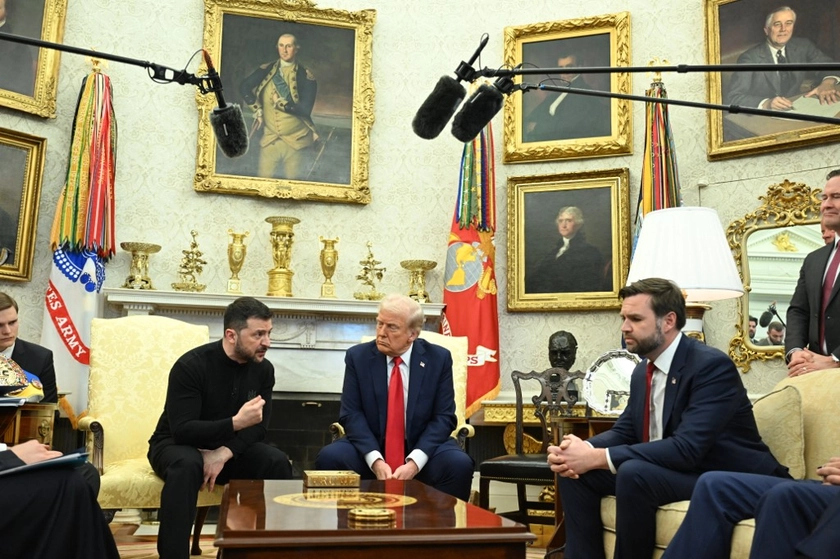A report by Business Insider, citing Timothy Wright a missile expert at the International Institute for Strategic Studies, says that Russia’s struggles to commission its new RS-28 Sarmat (NATO: SS-X-29/30 Satan II) nuclear capable inter-continental ballistic missile (ICBM) is because Russia’s 2014 annexation of Crimea and parts of the Donbas resulted in the loss of the Ukrainian expertise it depended on.
Wright said that historically, much of the ICBM design and manufacturing facilities and personnel were based in Ukraine, particularly that relating to liquid fuel systems. For more than 20 years following its independence the Ukrainian defense industry worked with and alongside that of Russia, which came to rely on Kyiv’s nuclear and missile technology.
The fifth-generation Sarmat was intended to replace the Soviet-era R-36 Voevoda (NATO: SS-18 Satan) missile, originally produced in the 1970s. The liquid-fueled motors for these ICBMs were developed by the Dnepropetrovsk “Yuzhnoye Design Bureau,” which became the Pivdenne Design Bureau in Dnipro.
There are suggestions that Pivdenne might have been one of the targets of the so-called new Russian Oreshnik hypersonic ballistic missile attack on Dnipro on Nov. 21.
After 2014 all military cooperation between the two countries ceased, with work on the RS-28 passing to the Makeyev State Rocket Center, which was also given the responsibility for maintaining the R-36 missiles. This didn’t work out, according to Maxim Starchak in a 2023 assessment for the Carnegie Endowment. He said that test launches had ceased, to be replaced by annual safety checks of the R-36 missiles and warheads.

Moscow Backs Belarus as ‘the Best Place’ for Russia-Ukraine-US Peace Talks
Wright suggested that it should have been obvious that Russia had no experience with liquid-fueled engines, neither in the Makeyev bureau nor the Moscow Institute of Thermal Technology, which, before 2014, were primarily involved in design of solid rocket motors for ICBMs. As such, Wright said the choice of liquid-fuel for the Sarmat was “very strange.” He added that “This is what the Ukrainians were doing for them [the Russians] before. That’s one of the reasons they’re having a lot of trouble [with the new missile].”
Fabian Hoffman, a missile expert at the Oslo Nuclear Project, also questioned the choice of liquid fuel for Russia’s next generation ICBM. “Everyone who built the previous missiles has retired or died,” he said. “There are still some in Ukraine, which played a major role in the Russian ICBM program – so that’s a big problem for Russia.”
Development of Sarmat has been beset by persistent delays. Initial testing scheduled for 2015 was delayed for two years with the one and only successful test launch taking place in 2022.
In 2018 Russian President Vladimir Putin told the Federal Assembly in his annual address that Sarmat would outmatch all air defense systems and “there are no analogues to it in the world, and there won’t be any for a long time.”
Propagandists such as Russian TV presenter Dmitry Kiselyov said at the beginning of Russia’s 2022 full-scale invasion that a single Sarmat would destroy England. And in 2024, State Duma Speaker Vyacheslav Volodin wrote that the flight time to Strasbourg, site of the European Union‘s parliament, was only 3 minutes 20 seconds.
In reality the four post-2022 Sarmat tests ended in failure culminating in the Sept. 21, 2024 explosion of the missile that destroyed a launch silo at the Plesetsk Cosmodrome in the Arkhangelsk Region, as reported by the Institute of the Study of War (ISW). The report said that although these failures did not mark a decline in the effectiveness of Russia’s nuclear capabilities:
“Russia continues to experience difficulties in developing new missile technologies, under pressure from international sanctions and high demands on the military-industrial complex in the context of the war with Ukraine.”
You can also highlight the text and press Ctrl + Enter











